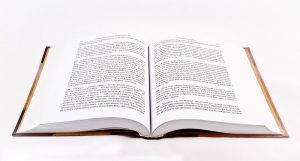It is an unfortunate fact that readers do judge a book by its cover. Having the right cover will catch the eye of potential buyers and make them check out what your book is about. Equally, having the wrong cover on a book can lose potential sales. There are a variety of choices in book covers for self-published authors and making the right choice can be the difference between success or failure.

What is a Premade Book Cover?
A premade book cover is a generic book cover sold by graphic designers to which the title and author name will be added. Typically, a designer will have a gallery of covers to select from. There will be tabs on the gallery page with pricing, customization offers, rights, and delivery information.
Pros:
- The author can see the cover before they buy it.
- The cover can be purchased immediately and is usually received within 48 hours.
- Cheaper than a custom book cover.
- Good at displaying the genre of the book.
Cons:
- Not personalized for a specific book.
- The cover may not be a perfect fit for the book contents.
- Alterations to the cover can be costly.
- Premade covers may or may not be sold exclusively to one author. This means there is a risk of another book having an almost identical cover on the market depending on the terms of sale.
What is a Custom Book Cover?
A custom book cover is a cover that is ordered from a graphic designer personalized to the book. Typically, an author seeks out a graphic designer and explains what they are looking for. Designers can be found on freelance sites as well as online art platforms.
The designer gives the author a quote and draws up a contract that explains the fees, rights, revisions, and timeframe for delivery.
Pros:
- They are customized to individual book.
- Alterations are usually part of the purchase package.
- Authors are able to provide input about the cover at every step of the process.
Cons:
- Custom book covers often cost more.
- The author’s vision for the cover may not represent the genre of the book as well as a generic premade cover.
- Authors have to manage a relationship with the designer over the course of the project.
- Finding the right graphic designer can be tricky.
- It can take a long time for the cover to be made.
- The cover may not turn out how the author envisioned and, depending on the contract, the author may still owe the designer for their time.
Image Rights
The creator of an image owns the rights to its use so authors must be sure to get clarification on whether the cover can be used for promotional material and who holds the rights to the images. If the designer created the cover from scratch, such as an illustration, they typically own the rights to the image and may or may not be willing to sell the author those rights. If they do not sell the rights, they can use the image for other covers and the author’s usage of the image may have a limited scope.
Some designers buy the rights to use an image from a stock image company. The rights they buy may affect the author’s use of the image and may specify the number of physical copies of a book that can be printed or otherwise limit the way those images can be used.
Need a Cover?
InstantPublisher offers a variety of inexpensive premade book covers for self-publishing authors who use their print service. InstantPublisher can also work with the author to make a custom book cover to suit the needs of any book genre.
If you would like more information on InstantPublisher’s personalized book printing services call 1-800-259-2592, fill out our online contact form, or email questions@instantpublisher.com.

